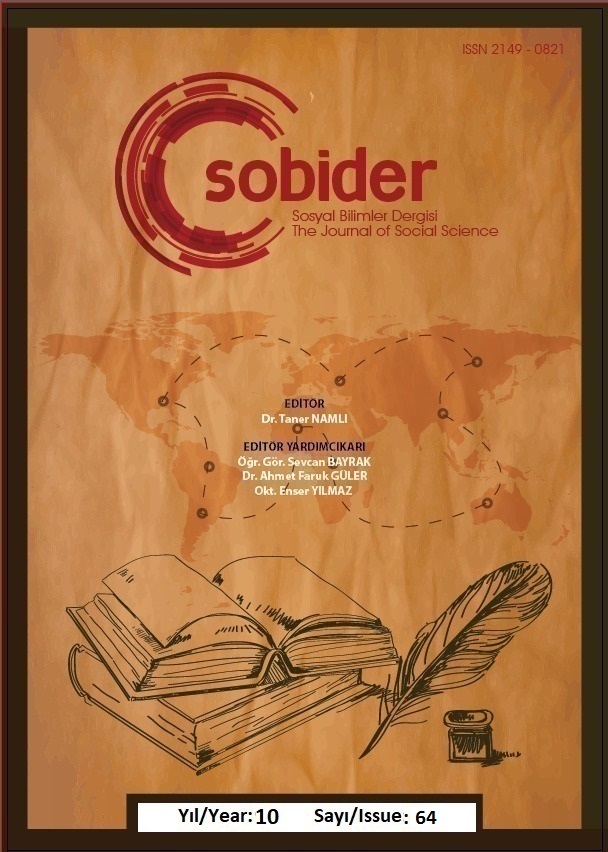Author :
Abstract
Gazzâlî (ö. 505/1111)İhyâu Ulûmi’d-dînisimli eserinin otuz beşinci kitabı olan“Tevhid ve Tevekkül Kitabı”nda, ilmi şahsiyetinde özel bir konumda bulunan bilgi ve varlık anlayışı sunmuştur. Tevhid kavramı ekseninde ele aldığı âlem anlayışını sembolik bir dil kullanımı tercih ederek, kendinden önceki İslam düşünce geleneğinde tespit edemeyeceğimiz benzersiz bir konuma yerleştirmiştir. Bu konum ile birlikte, meşşâi felsefe geleneğinden bağımsız olarak çözümlenemeyecek ve bilgi ile varlık anlayışının mutlak olarak birbirinden ayrılamadığı yeni bir teorinin kapısı açılmıştır. Bu ‘özel’ konum, Gazzâlî’yi hem döneminde hem de modern okumalar ile radikal ithamlara muhatap kılmıştır. Gazzâlî “Tevhid ve Tevekkül Kitabı” ve özelde de kalem misali hakkındaki eleştiriler sebebiyle İhyâ’dan sonra kendisini savunmak maksadıylael-İmlâ fî işkâlâti’l-İhyâ’yı yazmak durumunda kalmıştır. Bu eleştiriler ile İhyâçağdaşları tarafından bir karalamaya konu olmuş, yasaklanmış, yakılmış ve Gazzâlî küfre düşmekle yaftalanmıştır. Tekfir edilme sebebinin başında, kendisinin eş‘arî kimliğinden ödün verip felâsifenin âlem modelinin mihenk taşı olan sudûr teorisini benimsemiş olduğu iddiası gelmektedir. Bu makale ise,Gazzâlî’nin İhyâu Ulûmi’d-dînisimli eserinin teorik ve pratik sonuçları itibariyle en kritik bölümü olarak değerlendirilebilecek olan “Tevhid ve Tevekkül Kitabı”nın, âlem ve sebeplilik anlayışına odaklanmakta; Gazzâlî’nin kelâm ve felsefe arasında olan özel konumunu tespit etmekte ve batı literatürünün söz konusu eseri meşşâi felsefe geleneğinin bir ‘takipçisi’ olarak ele alışını incelemektedir.
Keywords
Abstract
Al-Ghazālī(d. 505/1111) presented the understanding of knowledge and existence, which has a special position in his scientific personality, in the thirty-fifth book of of Iḥyā’u ʻulūm al-dīn, “Book of the Faith in Divine Unity and Trust in Divine Providence” (Kitāb al-tawḥīd wa al-tawakkul). By using a symbolic language, he placed the understanding of the universe, which he dealt with in the context of the concept of tawhid, in a unique position that we could not detect in the previous Islamic thought tradition. This position opened the door to a new theory that could not be analyzed independently from the peripatetic philosophy tradition and in which the understanding of knowledge and existence could not be separated from each other in absolute terms. This ‘special’ position made al-Ghazālīthe subject of radical accusations, both in his time and in modern readings. al-Ghazālīhad to write al-Imlā’ fī iškālāt al-Iḥyā’in order to defend himself after Ihyābecause of the criticisms about the "Book of the Faith in Divine Unity and Trust in Divine Providence" and especially the pen example. With these criticisms,Ihyāwas the subject of a slander by his contemporaries, banned, burned, and al-Ghazālīwas labeled as heretic. At the beginning of the reason for being takfir was the claim that he had compromised his Ashʻarite identity and adopted the theory of emanation, which is the cornerstone of the universe model of the falâsifa. This article, on the other hand, focuses on the understanding of the universe and causality in the “Book of the Faith in Divine Unity and Trust in Divine Providence”, which can be considered as the most critical part of al-Ghazālī’sIḥyā’u ʻulūm al-dīnin terms of its theoretical and practical results; It identifies al-Ghazālī's special position between theology and philosophy and examines the western literature's treatment of the mentioned work as a ‘follower’ of the peripatetic philosophy tradition.
